TOGAF® 9 Certified
Learn from the Best, Learn from TopD
Features of This Course
Why Choose TOGAF® 9 Certified
Provider: GEL
Accredited by: The Open Group
Exam vouchers included
Free resit
Course duration: 25+ hours
Access Period: 12 months
Tutor support
Quizzes and exam practice
Works on mobile devices
Course Overview
The TOGAF® framework offers a versatile and comprehensive methodology for designing, building, implementing, and maintaining enterprise architectures. It is designed to be universally applicable, supporting organizations in streamlining their enterprise architecture (EA) practices to effectively manage business and digital transformations.
This TOGAF eLearning course bundle makes learning the TOGAF framework straightforward and accessible. Participants gain entry to both the TOGAF Foundation (Level 1) and TOGAF Certified (Level 2) courses. These courses come fully equipped with all necessary resources to not only pass the certification exams but also to apply the framework effectively in practical, real-world situations..
Target Audience
- Experienced and aspiring enterprise architects aiming to quickly obtain certification in TOGAF® Standard, Version 9.2.
- Professionals involved in enterprise architecture projects and activities.
- Enterprise architects tasked with the creation of architectural artifacts.
- Enterprise architects seeking to secure a recognized qualification that validates their comprehensive understanding of the TOGAF® Standard, Version 9.2.
- Organizations aiming to integrate TOGAF® Standard, Version 9.2 best practices into their operations.
- Developers and technical leaders who require a grasp of enterprise architecture to drive digital transformation.
What will you learn?
- Everything required to pass the TOGAF Foundation and TOGAF Practitioner exam.
- Techniques for utilizing and customizing the various stages of architecture development as defined by the TOGAF Architecture Development Method (ADM).
- Insights into how the phases of the TOGAF ADM facilitate the creation and management of enterprise architectures.
- Practical application of TOGAF tools such as Building Blocks, Stakeholder Management Techniques, the TOGAF Content Metamodel, the TOGAF Technical Reference Model, and the Integrated Information Infrastructure Reference Model.
- An understanding of the crucial deliverables of the ADM cycle and the function of the Architecture Repository.
Why take this course?
- This course is perfectly suited for independent study, featuring a range of e-Learning resources such as interactive quizzes, video lectures from experienced instructors, and downloadable content that doubles as TOGAF® Standard, Version 9.2 study guides.
- Included in the TOGAF Certified course is a workbook that acts as a comprehensive TOGAF study guide in PDF format.
- This award-winning TOGAF certification training is ideal for those aiming to quickly pass both the TOGAF Level 1 and Level 2 exams.
- This course package includes FREE TOGAF exam vouchers and a free resit (terms and conditions apply).
- The TOGAF standard is globally recognized as a leading EA framework, often required for senior EA roles. Successfully passing the TOGAF exams can significantly enhance your career and networking prospects in enterprise architecture.
- Mastering TOGAF terminology promotes better collaboration among team members within enterprise architecture teams.
- Participants receive 12 months of access to the course along with dedicated expert tutor support.
- The TOGAF e-Learning course is developed in-house by the online training experts at GEL.
- The content is also enriched with insights from highly skilled TOGAF professionals, offering unique practical perspectives unavailable elsewhere.
- This TOGAF® 9 Certified course is accredited by The Open Group.
Disclaimer
TOGAF® 9 Certified delivered by GEL is a course accredited by The Open Group. TopD Learning promotes this course on behalf of GEL.
TOGAF® is a registered trademark of The Open Group.
Course Curriculum
Overview of the TOGAF standard, Version 9.2, including foundational resources like the
TOGAF standard workbook, reasons for TOGAF certification's significance, and details
about the TOGAF Certification Program.
A 20-question review test on ITIL 4 Incident Management.
2 – Introduction to ITIL 4 Monitoring and Event Management Practice
Introduces the second ITIL 4 Specialist: MSF management practice: the ITIL 4 Monitoring and Event Management practice.
Module 1: Key concepts
Details the purpose, key terms, success factors, and metrics of the practice.
Module 2: Processes and people
Describes monitoring planning, event handling, and management review processes.
Module 3: Enabling the practice
Focuses on automation, tooling, partnerships, and capability development.
Detailed discussion on the objectives of each ADM phase, methodologies employed,
integration of Requirements Management into the ADM cycle, the role of Architecture
Principles, the use of Business Scenarios, the Gap Analysis technique, and
interoperability considerations.
Definition and explanation of stakeholders, concerns, architectural views, and
viewpoints, including a simple example of an architectural viewpoint, and the
relationship and processes involved in creating architecture views.
Explanation of what constitutes a building block, the differences between Architecture
Building Blocks and Solution Building Blocks, their role in the ADM cycle, and
characteristics of an Architecture Pattern.
Role and purpose of key deliverables within the ADM cycle including Architecture
Building Blocks, Architecture Contract, and others.
Explanation of the Enterprise Continuum, its application in organizing architecture,
promoting reuse of architectural artifacts, its constituents, and its relationship with the
TOGAF ADM.
Detailed overview of the Architecture Repository, classes of information it holds, the
architecture landscape levels, and the Standards Information Base.
Role of the TOGAF Technical Reference Model (TRM) and the Integrated Information
Infrastructure Reference Model (III-RM), their components, and their relevance to
achieving Boundaryless Information Flow.
Concepts of Architecture Governance, components of an Architecture Governance
framework, the establishment of an Architecture Board, the significance of
Architecture Contracts, Compliance, and Reviews, and the use of the ADM to establish
an Architecture Capability.
Understanding the inputs, steps, and outputs of the Preliminary Phase, including
establishing an architecture team, setting Architecture Principles, and the influence of
pre-existing architectural inputs.
Integration of Architecture Governance within the ADM cycle, the operation of an
Architecture Board, and the key success factors for effective governance.
Describes the characteristics of a well-defined Business Scenario, how to develop and
validate a Business Scenario, and its application within the ADM cycle.
Covers the identification of stakeholders, their concerns, and business requirements,
the role of Business Transformation Readiness Assessment, and the risk assessment
approach. Outlines the key outputs including the Statement of Architecture Work,
Capability Assessment, Architecture Vision, and Communications Plan, and discusses
the influence of Security Architecture on this phase.
Details the purpose and main components of the Architecture Content Framework,
and the relationship between the framework and the TOGAF ADM.
Discusses the development of a Stakeholder Map, identifying stakeholders and their
concerns, and uses an example from the TOGAF Standard as a guideline.
Explores core metamodel concepts, the division of the metamodel into core and
extensions, and the key concepts related to the core metamodel entities.
Covers the reconciliation of Interoperability Requirements with potential solutions,
factors influencing Business Transformation Readiness, requirements for risk
assessments, and the application of Capability-Based Planning within an enterprise
architecture context.
Explores the key inputs such as business principles, goals, and drivers for Phase B, and
the methods for applying business modelling techniques. It clarifies the process of
selecting reference models, viewpoints, and tools, and details the application of Gap
Analysis. The module describes how building blocks are utilized to develop the
Business Architecture and the significant outputs including components of the
Architecture Definition Document and Architecture Requirements Specification. It also
discusses how Security Architecture impacts this phase.
This module explains the strategic sequencing of Data and Application Architectures
and discusses the inputs including data principles. It outlines the steps to choose
reference models, viewpoints, and tools for data architecture, and the outputs such
as the Data Architecture components of the Architecture Definition Document and
Architecture Requirements Specification. The impact of Security Architecture on this
phase is also covered.
Discusses the inputs for the Application Architecture phase, such as application
principles, and the steps for selecting appropriate reference models and tools. It also
outlines the outputs including Application Architecture components of both the
Architecture Definition Document and the Architecture Requirements Specification,
with a focus on how Security Architecture influences this phase.
Reviews the TRM and its key elements like Application Software, and Application
Platform, and explains the structure and objectives of using the TRM in developing
Technology Architecture. The module also covers how to customize the TRM to suit
organizational needs and discusses the Platform Services and Service Quality
Taxonomies.
Describes the drivers and the fulfilment of the solution space for Boundaryless
Information Flow through the III-RM. It explains the III-RM structure, components, and
its relationship to the concept of Boundaryless Information Flow.
Covers the inputs, steps, and outputs for developing Technology Architecture. It
explains how the TRM is utilized in this phase and the role of Architecture Building
Blocks (ABBs). The module also discusses the Technology Architecture components of
the Architecture Definition Document and the Architecture Requirements
Specification, along with the impact of Security Architecture.
Discusses techniques such as the Implementation Factor Assessment and Deduction
Matrix and the Consolidated Gaps, Solutions, and Dependencies Matrix. It explains
how these tools are used to support the Architecture Implementation and Migration
Plan, and the role of the Business Value Assessment Technique in architecture
development.
Explains how migration planning techniques are utilized to consolidate Gap Analysis
results and create the Implementation and Migration Strategy. This module covers
the steps to identify and organize work packages and the creation of Transition
Architectures.
Describes the management frameworks involved in migration planning, the process
of assigning business value to work packages, prioritizing migration projects, and
confirming the Architecture Roadmap. It highlights key outputs such as the
Implementation and Migration Plan and Transition Architectures.
Explains the inputs, steps, and outputs of this phase, including how to conduct an
Architecture Compliance Review and the role of Architecture Contracts and Architecture Governance. The influence of Security Architecture and risk monitoring in
this phase is also detailed.
Discusses inputs like Change Requests and the steps involved in Architecture board
meetings. It describes the potential updates to Architecture Contracts and the
conditions under which a new Request for Architecture Work may arise, alongside the
impact of Security Architecture.
Reviews the inputs, steps, and outputs related to the ADM phases concerned with
change management. It covers how Security Architecture impacts requirements
management within these phases.
Explores the concept and application of Architecture Partitioning within the
Preliminary Phase of the ADM, including the criteria for partitioning solutions and
architectures.
Details the relationship between the Architecture Repository and the Enterprise
Repository, the types of information stored, and the role of the repository in housing
outputs from various projects.
Discusses the application of iteration within the ADM, factors influencing its use, and
various iteration cycles. It also explains how different levels of architecture and the
Enterprise Continuum are organized.
Focuses on the responsibilities of Enterprise Architects regarding Security Architecture
and recommended security adaptations to the ADM.
Covers the role and structure of Capability Maturity Models, particularly the ACMM
developed by CMU for the US Department of Commerce, and discusses how these
models support the ADM.
Describes the purpose, benefits, and structure of the Architecture Skills Framework,
including defining roles, skills, and proficiency levels necessary for effective
architecture practice.
Exam Information
Pearson Vue is the certified provider of TOGAF 9.2, IT4IT, and other certification exams, operating globally through an extensive network of testing centres.
This TOGAF training course includes a FREE voucher to help manage your TOGAF certification costs, valid for 12 months from issuance, and free resits.
Included in Good e-Learning’s TOGAF 9.2 Certified course is a student workbook that forms part of a comprehensive TOGAF 9 certification self-study pack in PDF format. This workbook is ideal for taking notes throughout the course and can serve as an invaluable exam preparation guide. Candidates have the option to print the workbook for handwritten notes or, with Adobe Reader 11 or later, annotate directly in the PDF.
The course also offers two TOGAF practice tests and a mock exam simulator complete with answers, designed to thoroughly prepare students for the official certification exam.
Requests for exam vouchers are generally processed within 2 working days, though it may take up to 5. Remember to request your exam voucher within the access period of the course, starting from the purchase date. For additional details, visit the GEL Support & FAQs page.
TOGAF® 9 Foundation exam
- Format: Multiple choice with 40 questions.
- Duration: 60 minutes, with an additional 30 minutes provided in countries where English is not the primary language, totalling 90 minutes.
- Exam Conditions: Closed-book, no external resources allowed.
- Passing Score: 55%, requiring at least 22 out of 40 points to pass.
- Retake Policy: Candidates who do not pass must wait a minimum of one month before reattempting the exam.
TOGAF® 9 Certified exam
- Format: 8 scenario-based, complex multiple-choice questions.
- Duration: 90 minutes.
- Scoring:
- 5 points for each correct answer.
- 3 points for each second-best answer.
- 1 point for each third-best answer.
- Passing Score: 60%, necessitating a minimum score of 24 out of 40.
- Exam Conditions: Open book, including an electronic copy of the TOGAF 9 Standard as a reference during the exam.
Frequently Asked Questions
FAQs
Enterprise architecture involves developing the structures of IT systems, detailing their components and the ways they interact. This helps organizations gain a more comprehensive understanding, allowing them to align their IT architecture with business objectives. This alignment is crucial for facilitating significant transformations within enterprises, promoting IT development, and managing broad organizational changes.
The TOGAF® standard is a prominent framework in enterprise architecture. It offers a detailed method for planning, constructing, and maintaining enterprise architectures, which has been widely adopted across numerous organizations and industries globally.
The Open Group collaborates with both technology providers and users, as well as consortia and other standards bodies, to define, refine, and integrate evolving requirements, create standards and policies, and disseminate best practices.
The TOGAF standard is applicable to enterprises of almost any size and type, playing a vital role in streamlining operations and executing complex business strategies. Its increasing adoption underscores the growing need for TOGAF-certified architects, although its effective implementation requires certified professionals.
The TOGAF certification journey starts with the TOGAF Foundation (Level 1), followed by the TOGAF Certified (Level 2) exam. The TOGAF Business Architecture (BA) exam and the Essentials and Implementation courses do not require prior exam passes.
TOGAF-certified individuals, including enterprise, solutions, and technical architects, often earn between $85,000 and $202,000 annually, reflecting varied roles across different regions and industries globally.
TOGAF enjoys global popularity, with certified professionals in over 130 countries. The standard sees particularly high adoption in the UK, USA, India, the Netherlands, and Australia.
The TOGAF standard enhances business capabilities to undergo transformations, expand IT capabilities, and execute widespread organizational changes efficiently, ensuring IT structures support core business objectives.
The TOGAF Foundation exam is a 60-minute closed-book test with 40 questions, offering additional time for non-native English speakers. A pass requires at least 55%. The TOGAF Certified exam features eight questions, lasts 90 minutes, and requires a 60% to pass.


